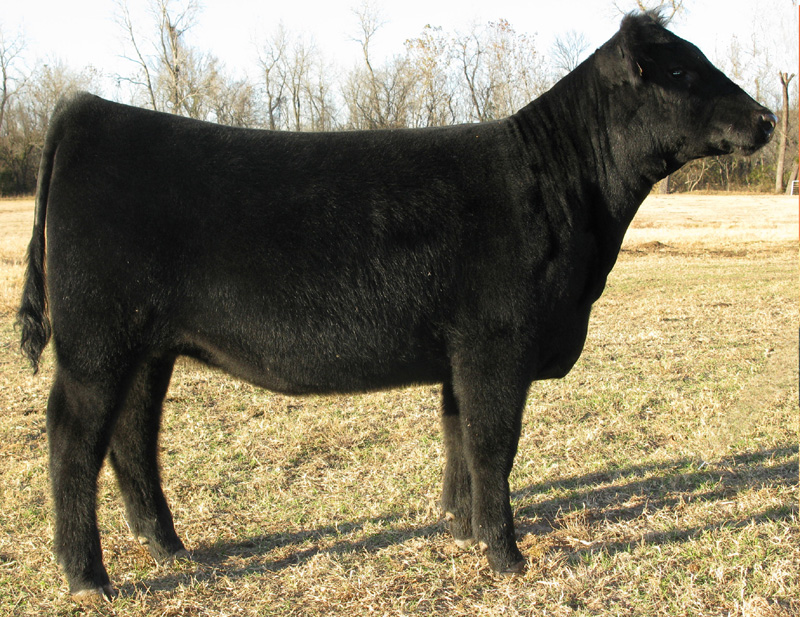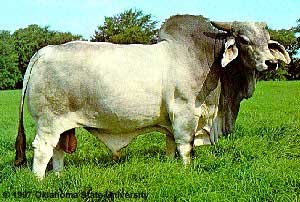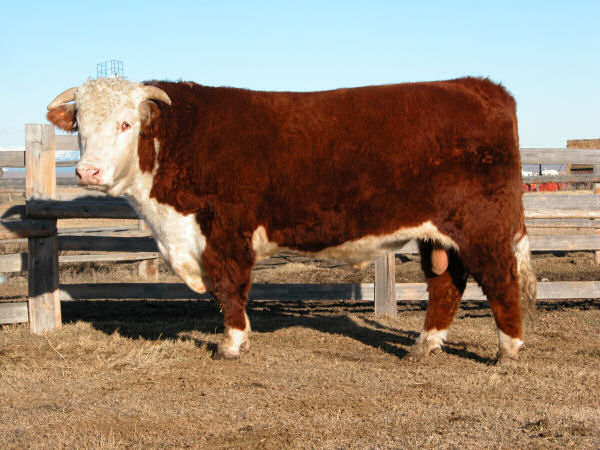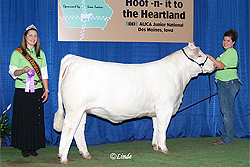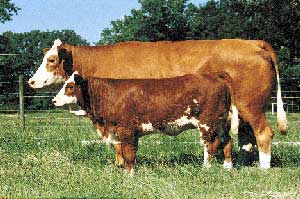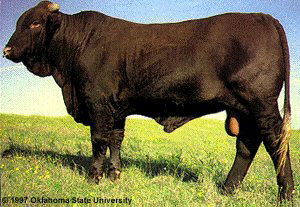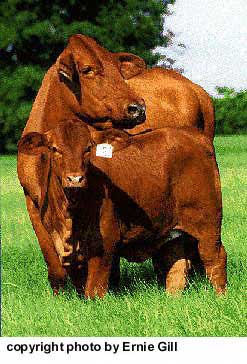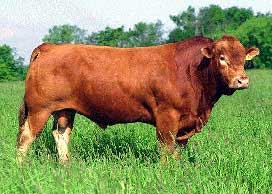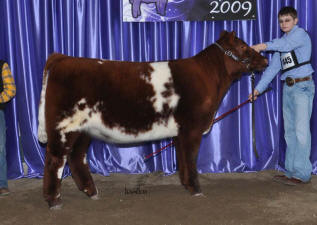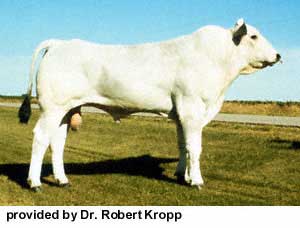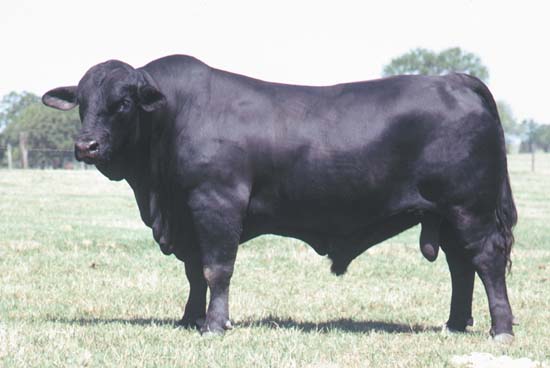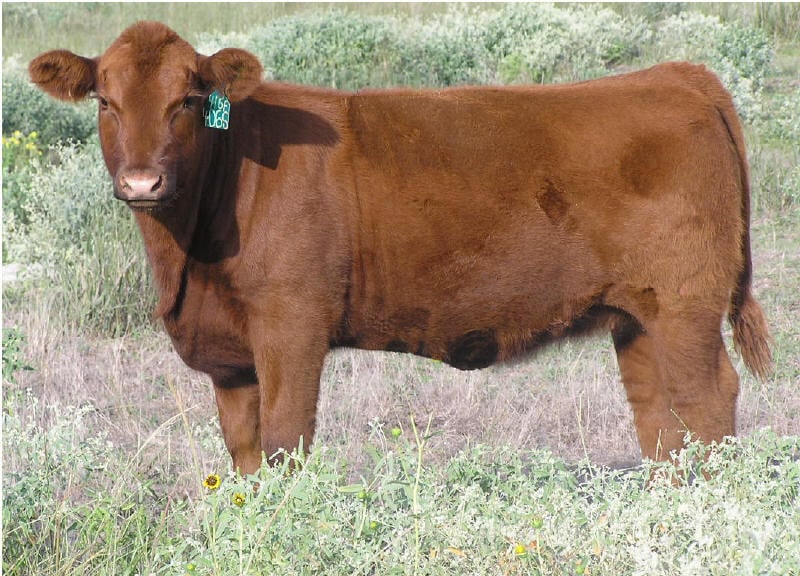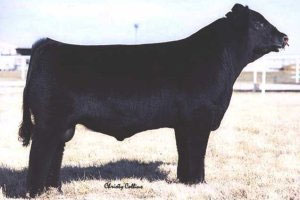Beef Breed Identification Quiz Questions

Beef Breed Identification Quiz
Attention: Be sure to enter your name when you begin the quiz.
- 1.
- A.
Hereford
- B.
Simmental
- C.
Angus
- D.
Red Angus
Correct Answer
C. AngusExplanation
The Angus breed originated in the highlands of northern Scotland in the shires of
Aberdeen and Angus. Angus cattle were first imported into the United States in 1873. These naturally
polled cattle have black hair and skin. Angus are moderate in size and considered a maternal breed. These
cattle are characterized by early sexual and compositional maturity, ease of fleshing, good milk ability, and
excellent marbling.Rate this question:
-
- 2.
- A.
Brahman
- B.
Santa Gertrudis
- C.
Chianina
- D.
Hereford
- E.
Scottish Highland
Correct Answer
A. BrahmanExplanation
The Brahman breed originated in the United States from humped cattle that were imported from India and Brazil. Brahman cattle are a horned breed that vary in color, but are predominantly gray and red. Brahman cattle are humped, have large drooping ears, and loose skin in the throat and dewlap. These cattle have a very high tolerance to heat and have a natural resistance to many parasites. They are considered a maternal breed.Rate this question:
-
- 3.
- A.
Hereford
- B.
Simmental
- C.
Shorthorn
- D.
Polled Hereford
- E.
Texas Longhorn
Correct Answer
A. HerefordExplanation
The Hereford originated in England and was imported into the United States in 1817. Herefords are brownish red in color with a white face, chest, underline, and switch. The Hereford breed is a docile breed known for longevity, early maturity,and good milking ability.Rate this question:
-
- 4.
- A.
Braunvieh
- B.
Charolais
- C.
Chianina
- D.
Gelbvieh
- E.
Limousin
Correct Answer
B. CharolaisExplanation
The Charolais breed was developed in France and was introduced into the United States in 1936. This breed ranges from white to light straw in color. Charolais cattle can be horned or polled. This large, heavily muscled breed’s traits include a fast growth rate and feed efficiency.Rate this question:
-
- 5.
- A.
Hereford
- B.
Chianina
- C.
Braunvieh
- D.
Red Angus
- E.
Simmental
Correct Answer
E. SimmentalExplanation
The Simmental breed originated in the Simme Valley of Switzerland. The breed became established as a North American beef breed in 1967. Simmental color patterns vary from red and white spotted, to fawn or straw colored, to dark red, to black. Simmental cattle are acknowledged for both growth traits and maternal traits. The Simmental breed has been recognized as the heaviest milking of the Continental breeds.Rate this question:
-
- 6.
- A.
Shorthorn
- B.
Brahman
- C.
Santa Gertrudis
- D.
Texas Longhorn
- E.
Simmental
Correct Answer
C. Santa GertrudisExplanation
The Santa Gertrudis breed was developed on the King Ranch in Kingsville,Texas. This composite breed consists of 5/8 Shorthorn and 3/8 Brahman. Santa Gertrudis cattle are dark red
in color and can be horned or polled. Santa Gertrudis cattle are a desirable breed because of their overall
hardiness. This breed adapts to adverse conditions and is productive in hot climates. Santa Gertrudis cattle also possess many desirable maternal characteristics.Rate this question:
-
- 7.
- A.
Texas Longhorn
- B.
Simmental
- C.
Chianina
- D.
Angus
- E.
Charolais
Correct Answer
A. Texas LonghornExplanation
The Texas Longhorn is a descendant of the Spanish cattle brought to the Americas by explorer, Christopher Columbus. These cattle lived as feral cattle for over three hundred years. Texas Longhorns are known for their distinctive long horns. Longhorn cattle have various colors and color patterns, including spotted color patterns. Longhorn traits include longevity, hardiness, and adaptability. Longhorn cattle are light muscled and produce calves with low birth weights.Rate this question:
-
- 8.
- A.
Red Angus
- B.
Simmental
- C.
Tarentaise
- D.
Beefmaster
- E.
Charolais
Correct Answer
D. BeefmasterExplanation
The Beefmaster breed was developed on the Lasater Ranch in Texas in the 1930s. The cattle do not have a color standard although they are predominantly red or dun. A majority of Beefmaster cattle are horned. The Beefmaster is a composite breed consisting of 1/2 Brahman,1/4 Hereford, and 1/4 Shorthorn. This breed thrives under both practical and severe range conditions.
Beefmaster cattle possess many desirable reproductive traits and have high milking potential.Rate this question:
-
- 9.
- A.
Gelbvieh
- B.
Simmental
- C.
Shorthorn
- D.
Texas Longhorn
- E.
Angus
Correct Answer
A. GelbviehExplanation
The Gelbvieh breed originated in Germany and was introduced into the United States in 1971. The Gelbvieh stresses both maternal and carcass traits, including increased fertility, high
milk ability, excellent growth rate, and good muscling. The Gelbvieh breed has no color restrictions and can be horned or polled.Rate this question:
-
- 10.
- A.
Longhorn
- B.
Shorthorn
- C.
Red Angus
- D.
Hereford
- E.
Simmental
Correct Answer
B. ShorthornExplanation
The Shorthorn breed originated in England and was imported into the United States in 1783. Shorthorns can be horned or polled. The Polled Shorthorn was developed in the United States in 1870. Shorthorn cattle can be red, white, or roan in color. These cattle are early maturing, excellent
milkers, and known for their good disposition.Rate this question:
-
- 11.
- A.
Shorthorn
- B.
Angus
- C.
Charolais
- D.
Simmental
- E.
Chianina
Correct Answer
E. ChianinaExplanation
The Chianina (pronounced kee-a-nee-na) breed originated in central Italy. Chianina genetics were first introduced in the United States in 1971, but the first Italian Chianina was not imported
into the country until 1975. Fullblood Chianinas range in color from white to steel gray and have black pigmented skin. The Chianina have been acknowledged as the largest breed, with some bulls weighing more than three thousand pounds. This breed is characterized by good feed efficiency, increased rate of
gain, and calving ease, which is uncommon in larger breeds. This large well-muscled breed is most often identified as terminal breed.Rate this question:
-
- 12.
- A.
Brangus
- B.
Brahman
- C.
Angus
- D.
Simmental
- E.
Hereford
Correct Answer
A. BrangusExplanation
The Brangus breed was developed in the United States. Registered Brangus, a composite breed, consists of 3/8 Brahman and 5/8 Angus. Brangus cattle are black in color and are polled.
The Brangus breed has combined many of the most desirable traits of the Brahman and Angus breeds. Some of these traits include hardiness, heat tolerance, muscularity, early maturity, and production of quality beef.Rate this question:
-
- 13.
- A.
Red Angus
- B.
Hereford
- C.
Simmental
- D.
Shorthorn
- E.
Tarentaise
Correct Answer
A. Red AngusExplanation
The Red Angus breed originated in the British Isles and was introduced into the United States in the 1870s. This breed posses many of the traditional Angus traits including carcass quality, maternal characteristics, calving ease, and moderate size.Rate this question:
-
- 14.
- A.
Maine Anjou
- B.
Simmental
- C.
Hereford
- D.
Brangus
- E.
Charolais
Correct Answer
D. BrangusExplanation
The Brangus breed is a cross between Brahman and Angus cattle. It is known for its heat tolerance, disease resistance, and good meat quality. The animal in the picture appears to have the solid black color and polled (no horns) characteristics of a Brangus.Rate this question:
-
- 15.
I
- A.
Simmental
- B.
Shorthorn
- C.
Polled Hereford
- D.
Red Angus
- E.
Hereford
Correct Answer
C. Polled HerefordExplanation
Polled Hereford - The Hereford breed consists of both horned and polledcattle, both of which are registered with the American Hereford Association. Herefords are brownish red in color with a white face, chest, underline, and switch. The Hereford breed is a docile breed known for longevity, early maturity, and good milking ability. The word Polled means genetically these cattle do not carry the trait to have horns.Rate this question:
-
Quiz Review Timeline +
Our quizzes are rigorously reviewed, monitored and continuously updated by our expert board to maintain accuracy, relevance, and timeliness.
-
Current Version
-
Oct 30, 2024Quiz Edited by
ProProfs Editorial Team -
Oct 25, 2016Quiz Created by
Trish Williams
- Amphibian Quizzes
- Bird Quizzes
- Cat Quizzes
- Dinosaur Quizzes
- Dog Quizzes
- Emperor Penguin Quizzes
- Endangered Species Quizzes
- Fish Quizzes
- Goat Quizzes
- Hamster Quizzes
- Horse Quizzes
- Insect Quizzes
- Invertebrate Quizzes
- Mammal Quizzes
- Mouse Quizzes
- Nematode Quizzes
- Pet Quizzes
- Pig Quizzes
- Rabbit Quizzes
- Reptile Quizzes
- Sheep Quizzes
- Wolf Quizzes
- Zoo Quizzes
 Back to top
Back to top



